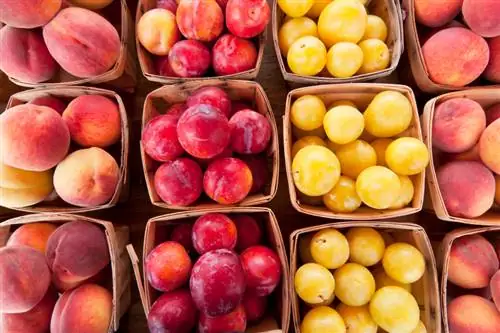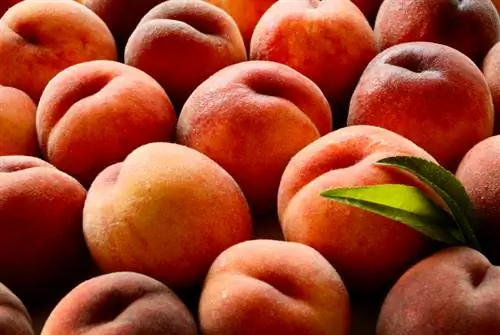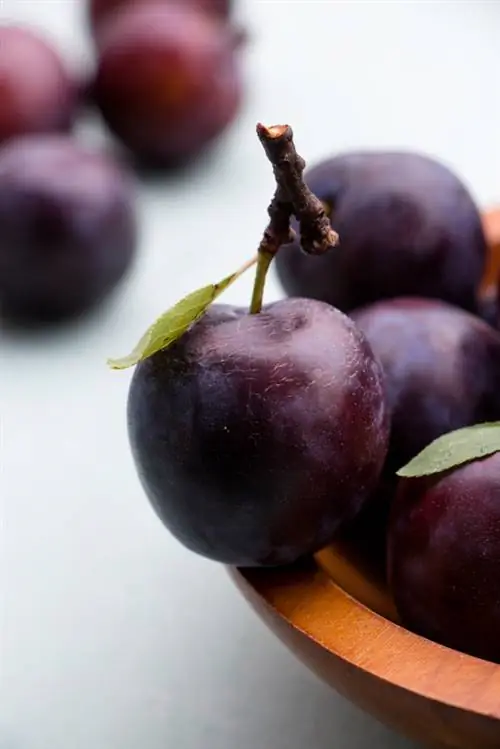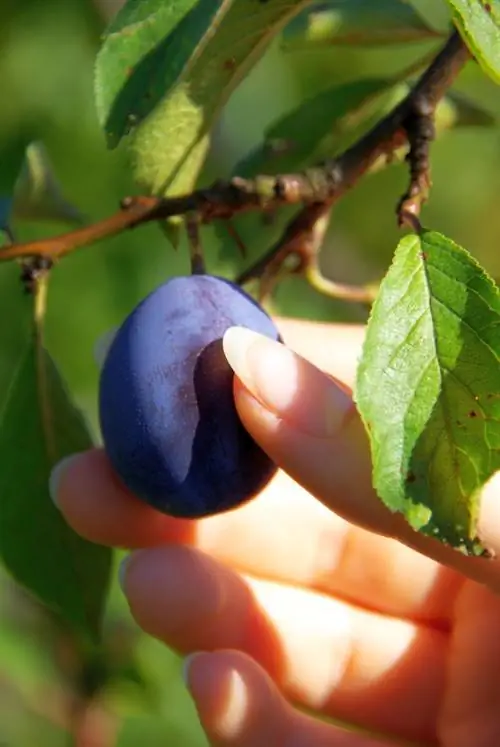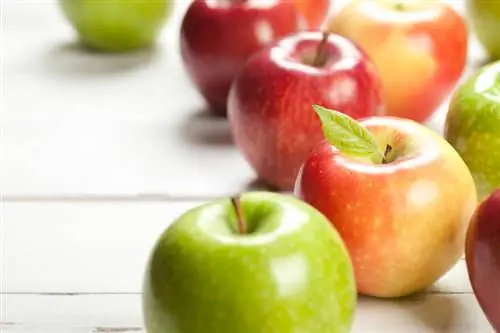- Author admin [email protected].
- Public 2023-12-16 16:46.
- Last modified 2025-01-23 11:20.
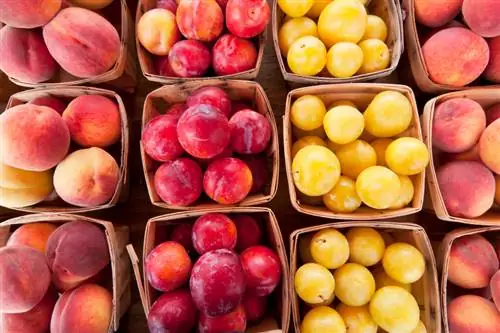
Numerous plum species thrive in local areas. However, not every variety is suitable for your orchard. Find out in this article which plums promise successful harvests.
Which plum varieties are suitable for the orchard?
Recommended plum varieties for the orchard include Felsina, Topfive, Formosa Plum, Yellow Egg Plum, Yellow Spilling, Hanita, Harbella, Presenta, Jojo, Katinka, Tegera, Tophit, Haganta and Ontario Plum. These varieties offer diverse flavors, harvest times, and are often resistant to pests and diseases.
New breeds
Until recently, the plum tree barely yielded harvests in regions with heavy Sharka infestations. Hobby gardeners have been benefiting from new hybrids for more than 30 years. Today there are around 2,000 different varieties. These belong to 15 species.
The focus is on breeding resilient plums. Establishing natural predators proves to be the most effective against various types of pests. Despite species-appropriate care and a sunny location, fruit trees often suffer from Sharka disease.
Sharka virus
- Transmission by aphids
- brown, hard spots in the pulp and on the peel
- only chemical antidotes known
- negative impact on the entire harvest
Furthermore, new varieties produce a bountiful harvest in the first year after planting. The fruits impress with a fruity, sweet taste. Most varieties are self-fertile. When choosing the right plum tree, pay attention to the following characteristics:
Fertility
The first choice is self-fertile plums. These do not require specific neighbors for pollination.
Harvest time
It is recommended to grow an early and a late variety. In this way, delicious fruits ripen gradually from July to October.
Felsina and Topfive
- Harvest: from August
- yielding
Info:
Both species are resilient. Due to their low demands on soil and location, they are suitable for the orchard. Felsina and Topfive produce fruit in the first or second year of cultivation.
Formosa plum
- Fruits: medium-sized, juicy, sweet and sour
- Harvest: July to August
- resilient
Advantage:
The Formos plum offers a rich harvest from the second year of cultivation. Thanks to its easy-care character, it is suitable for all floors and locations.
Yellow egg plum (yellow Marunk)
- Fruits: round, juicy, yellow
- Harvest: beginning of September
- very susceptible to rot in persistently damp weather
- tall growing
- very susceptible to frost
Note:
For a good yield, this variety requires nutrient-rich soil and a warm summer climate. The plum tree does not thrive in cool areas.
Yellow Spilling
- Fruits: small, yellowish-green
- Harvest: mid to late August
- Variant: standard tree, fruit hedge
- resistant to diseases and pest infestation
Tip:
This variety cannot be stored. After harvesting, the sweet and plump fruits provide a wonderful base for jams. The shell is also easy to remove. This is an advantage for preparing delicious desserts and juices. The yellow spilling can withstand longer dry periods.
Hanita
- Fruits: up to 45 grams
- Harvest: beginning of September
- sharka-tolerant
Advantage:
This variety is suitable for small home gardens as it grows weakly. It ripens very well in cool locations and places no demands on the soil. The self-fruitful plum has been enriching the fruit trade since 1980. Hanita is suitable for preparing various regional speci alties. As dried fruit it can be stored for up to 12 months.
Harbella and Presenta
- Harvest: September/October
- stores well
- self-fertile
Info:
Both varieties start early and have a high yield. Presenta has the longest shelf life. It plays an important role in the fruit trade.
Jojo
- Fruits: up to 60 grams in weight
- resistant to the Sharka virus
Origin
This plum has been available commercially since 1999. It was created by crossing Stanley Zwetschge and Ortenauer Zwetschge. There are small specimens with good yields available in specialist shops. They are suitable as potted plants for balconies or terraces.
Katinka and Tegera
- Fruits: large
- low susceptibility to rot
- charka-resistant
Info
Katinka ripens from the second week of July. It is ideal as table fruit or for baking.
Tophit and Haganta
- Fruits: up to 80 grams
- Harvest: mid-September
- resistant to pest and fungal infestation
Note:
Tophit is characterized by her Sharka tolerance. In contrast, Haganta is not suitable for areas with heavy Sharka infestations.
Japanese Plum
Large plums are available in markets. These come primarily from southern areas and have a weak aroma. Popular varieties include Friar. This is not suitable for the home garden.
Excursus: Ume (Prunus mume)
This Japanese plum is very popular in Japan. Its flowers appear between January and February. Ume flowers and ume fruits play a special role in Japan. In everyday life and in art, they are a classic symbol of luck or the power of survival. Their sour taste allows them to be used in a variety of ways. Ume is also represented in traditional Chinese medicine.
Ontario plum (yellow round plum)
- Fruits: large, juicy plums
- Flowering: late, frost hardy
- Harvest: from the beginning of August (in warmer areas)
Info
This variety has been on the market since 1847. When cut regularly, the yellow round plum delivers abundant harvests for many years.
Tips & Tricks
The delicious relatives of these species include plums, mirabelle plums and reindeer plums. These juicy fruits are suitable for making jams, desserts and fruit cakes. Externally, new plum varieties differ less and less from these subgroups.

